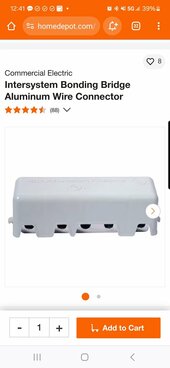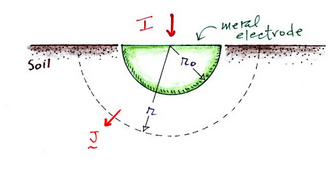Bluedog225
Texas
- Joined
- Nov 18, 2019
- Messages
- 3,299
I plan to drive 2 eight foot rods not less than 6 feet apart and connected with an appropriately sized conductor per the NEC.
All good.
Can the rods be located 25’ from the main panel? This would provide greater physical protection as they’re sticking out of the ground a bit.
Can the conductor between the rods and from the rods to the main panel be buried bare copper?
6’ separation is the minimum. What’s the maximum? Eg: 10’? 25’?
Thanks
All good.
Can the rods be located 25’ from the main panel? This would provide greater physical protection as they’re sticking out of the ground a bit.
Can the conductor between the rods and from the rods to the main panel be buried bare copper?
6’ separation is the minimum. What’s the maximum? Eg: 10’? 25’?
Thanks





